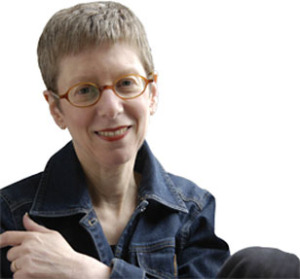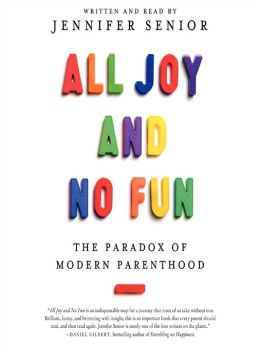In 2010, New York Magazine writer Jennifer Senior’s feature article, “All Joy and No Fun: Why Parents Hate Parenting” created quite the buzz. Now hot off the press is her book, All Joy and No Fun: The Paradox of Modern Parenthood. In her recent interview with NPR’s Terri Gross, she talks about how our society came to idolize its children.
Senior discusses how in the era of child labor protests children became “economically worthless and emotionally priceless.” Prior to that time they weren’t put on a pedestal like they are today. For early American settlers, for example, children were necessary for survival. Children, and lots of them, were needed to work the land and help with all that comes with homesteading. During this time, says sociologist E.E. LeMasters, people had children with no “great expectation,” other than “simple care, nurture, and teaching of rural settlement skills.” Having children was a practical matter, and one that brought economic benefit to a family.
Putting parenthood on a pedestal, particularly motherhood, however, started way before the time of child labor laws – arguably as far back as 50 BC! Pronatalism, which exalts the role parenthood, started way back, and was driven by strong motives of survival and power.
Interestingly, it took the Great Depression for child labor laws to truly take effect. In 1916 the National Child Labor Committee and the National Consumers League got the U.S. Congress to pass the Keating–Owen Act, the first federal child labor law, which Woodrow Wilson signed into law. However, two years later the U.S. Supreme Court struck down in Hammer v. Dagenhart, on the grounds that the law violated the Commerce Clause by regulating intrastate commerce. In 1924, Congress attempted to pass a constitutional amendment authorizing a national child labor law, but it was blocked, and eventually dropped. But during the Great Depression adults were desperate for jobs, they were willing to work for child wages. In 1938, President Franklin Delano Roosevelt signed the Fair Labor Standards Act, which finally placed limits on many forms of child labor.
 Somewhere in this process child idolization began. But were they in every generation to follow? In the interview, Terri Gross recalls childhood memories that I resonate with as well. She remembers how her mother was always “there” but busy doing her own thing and how she “did not have to be with me all of the time.” She knew she was the most important thing to her mother, but it sure did not sound like she was bought up with an “emotionally priceless” parental backdrop.
Somewhere in this process child idolization began. But were they in every generation to follow? In the interview, Terri Gross recalls childhood memories that I resonate with as well. She remembers how her mother was always “there” but busy doing her own thing and how she “did not have to be with me all of the time.” She knew she was the most important thing to her mother, but it sure did not sound like she was bought up with an “emotionally priceless” parental backdrop.
But as Senior elaborates, in that generation moms who stayed at home were “housewives” and managing the house and household was the primary focus. Today, she says a mom who does not work outside the home is called a “stay at home mom” and with more mothers having professional careers outside the home, motherhood has come to be seen as one of them – in modern day motherhood, moms are “professional moms” which means the focus on the child and the perfect raising of him/her is paramount.
Senior writes about the “contrasts the strains of day-to-day parenting with the transcendent experience of having a child,” but the interview sure focused more on the former than the latter. Talking about the not so positive realities has been taboo for a long time. But Senior’s book joins recent others, like Maxed Out: American Moms on the Brink by Katrina Alcorn and The Good Mother Myth: Redefining Motherhood to Fit Reality that seem to chip away at this taboo.
Could these kinds of books and the increasing honesty by parents on the web these days reflect just a bit chipping away at the pronatal armor that’s driven the exaltation of parenthood for such a long time?
Tell me what you think.
And if you have read All Joy and No Fun, I invite you to send me a review!


